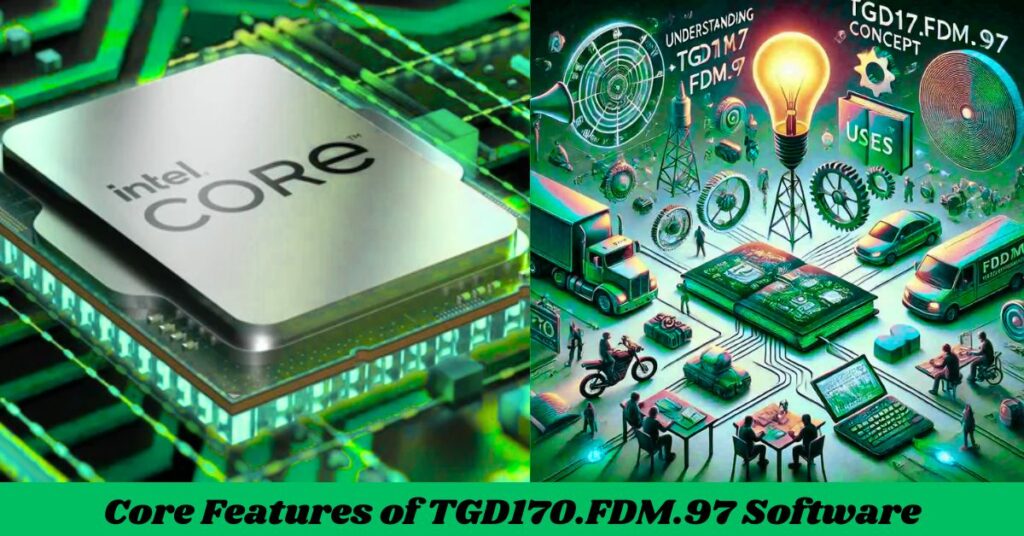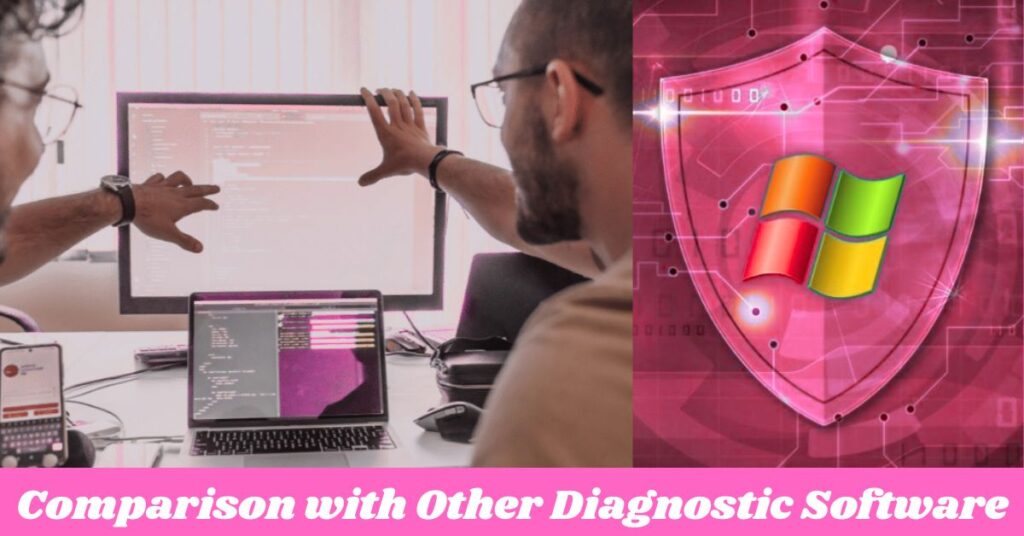The TGD170.FDM.97 new release transforms how businesses manage files and monitor systems. This powerful software combines file management with advanced diagnostic capabilities. Software solutions today must evolve rapidly to meet changing industry needs.
TGD170.FDM.97 stands at the forefront of this evolution. Companies across various sectors rely on it daily. Its versatility makes it essential for modern digital operations. The latest version includes significant improvements.
Users report increased productivity after implementation. Let’s explore what makes this software so valuable.
What is TGD170.FDM.97 Software?
TGD170.FDM.97 is a comprehensive platform for data monitoring and file organization. The name refers to the current version (97) of the diagnostic management tool.
It serves both individual users and large industrial environments. The software bridges the gap between simple file managers and complex industrial systems.
FDM stands for Fault Diagnostic Management, a core functionality. It operates seamlessly across different operating systems. The design prioritizes both power and accessibility. Even beginners can navigate its interface with minimal training.
Advanced users appreciate its depth of features. It represents the evolution of digital workspace solutions.
Core Features of TGD170.FDM.97 Software
The software comes packed with powerful tools for various applications. Each feature addresses specific industry needs. The integrated approach sets it apart from competitors.
Updates arrive regularly to enhance functionality. The user interface remains consistent across modules. Let’s examine the key features that make this software exceptional.

1. Fault Diagnosis and Management
The fault diagnosis engine identifies system issues immediately. Alerts generate automatically when problems arise. The software suggests appropriate corrective measures.
Users can customize notification parameters. Historical fault data helps prevent recurring problems. The diagnostic tools work across connected systems. Response times improve with each software iteration.
Technicians receive detailed error reports. The system prioritizes critical issues automatically. This feature alone justifies the investment for many organizations.
2. Real-Time Monitoring
Real-time monitoring provides instant visibility into system performance. Data updates occur continuously without manual refreshing. Threshold alerts notify users of potential issues.
The monitoring dashboard displays key metrics clearly. Users can track multiple systems simultaneously. Mobile notifications ensure awareness even when off-site. Historical data appears alongside current readings for comparison.
Custom monitoring profiles suit different operational needs. Visual indicators show status at a glance. This feature proves essential for time-sensitive operations.
3. Data Logging and Analysis
Comprehensive data logging creates valuable historical records. Analysis tools identify patterns and anomalies. Reports generate automatically on schedules. Export options include multiple file formats.
The system stores data efficiently to minimize space requirements. Search functionality makes finding specific records simple. Filtering options help focus on relevant information. Trend analysis predicts future system behavior.
Data visualization makes complex information understandable. This feature transforms raw data into actionable insights.
4. Customizable Dashboards
Customizable dashboards adapt to each user’s specific needs. Drag-and-drop interfaces make reconfiguration simple. Color coding highlights priority information. Different departments can create specialized views.
Dashboard templates exist for common use cases. Widget libraries expand functionality further. User preferences save automatically between sessions. Permission settings control what each user can modify.
Mobile-responsive design works across devices. This feature ensures everyone sees what matters most to them.
5. Remote Access and Control
Remote access allows system management from anywhere. Secure connections protect sensitive operations. Multiple users can collaborate simultaneously. Permission levels restrict unauthorized changes.
Mobile apps provide on-the-go functionality. Emergency access protocols exist for critical situations. Location tracking logs where changes originated. Session timing limits enhance security further.
Connection quality indicators prevent disrupted workflows. This feature enables truly distributed teams to function effectively.
6. Integration with SCADA and PLCs
Seamless SCADA integration connects with existing industrial systems. PLC integration requires minimal configuration. Standard protocols ensure compatibility across platforms.
Legacy systems connect through specialized adapters. Real-time data flows between connected systems. Centralized control simplifies complex operations. Bidirectional communication enables complete automation.
Integration wizards guide through connection setup. Multiple vendor systems work together harmoniously. This feature eliminates operational silos.
Benefits of Using TGD170.FDM.97 Software
Implementing TGD170.FDM.97 delivers immediate and long-term advantages. Organizations report measurable improvements quickly. The benefits extend beyond technical departments.
Return on investment typically exceeds expectations. User satisfaction rates remain consistently high. Let’s explore the key benefits that drive adoption.

1. Increased Operational Efficiency
Operational efficiency improves through automated workflows. Tasks that took hours now complete in minutes. System bottlenecks disappear with proper monitoring. Employees focus on strategic work instead of routine tasks.
Process standardization reduces errors significantly. Communication between departments becomes more effective. Resource allocation improves with better visibility.
Maintenance schedules optimize automatically. Decision-making speeds up with readily available data. This benefit directly impacts the bottom line.
2. Cost Savings
Cost savings accumulate through preventive maintenance. Avoiding equipment failures saves substantial money. Energy usage is optimized through better monitoring.
Staff time redirects to value-adding activities. License consolidation reduces software expenses. Cloud options eliminate hardware costs for some deployments. Automation reduces labor-intensive processes.
Extended equipment lifespan results from better care. Inventory management improves with better data. These savings typically exceed the software investment quickly.
3. Improved Safety
Safety improves through early problem detection. Hazardous conditions trigger immediate alerts. Automatic shutdowns prevent dangerous situations. Compliance with safety regulations becomes automatic.
Incident reporting streamlines through the software. Safety metrics track improvement over time. Training modules reinforce proper procedures. Audit trails document all safety-related activities.
Remote monitoring reduces physical exposure to hazards. This benefit protects both personnel and equipment.
4. Regulatory Compliance
Regulatory compliance simplifies with automatic documentation. Audit preparation takes days instead of weeks. Consistent processes ensure consistent compliance. Required reports are generated automatically.
Evidence of compliance remains readily available. Updates to regulations are implemented quickly across systems. Non-compliance risks decrease significantly. Certification processes streamline through better record-keeping.
Multiple regulatory frameworks integrate into a single system. This benefit reduces legal and financial risks.
5. Scalability
Scalability ensures the software grows with your business. Adding new users requires minimal effort. System performance maintains even with increased load. New modules integrate without disrupting existing operations.
Geographic expansion accommodates easily. Additional data sources connect seamlessly. Future technologies will integrate through regular updates. Legacy data migrates into the expanded system.
Infrastructure changes require minimal reconfiguration. This benefit protects your initial investment long-term.
READ THIS BLOG: FTAsiaManagement T ech: Empowering Entrepreneurs with AI and Blockchain in the Crypto Market
Typical Use Cases of TGD170.FDM.97 Software
The versatility of TGD170.FDM.97 enables diverse applications. Different industries adapt it to their specific needs. Success stories demonstrate its flexibility.
Implementation methods vary by organization size. The following examples illustrate common deployments.
Manufacturing Plants
Manufacturing facilities use TGD170.FDM.97 to monitor production lines. Equipment downtime reduces through predictive maintenance. Quality control data collected automatically.
Material usage optimizes with accurate tracking. Production schedules adjust based on real-time conditions. Shop floor visualization improves awareness. Maintenance teams prioritize work effectively.
Energy usage monitors across machinery. Workflow bottlenecks are identified through data analysis. This sector sees some of the most dramatic improvements.
Energy Sector
Energy providers depend on reliable monitoring solutions. Power grid performance tracks continuously. Outage detection happens instantly. Restoration efforts coordinate through the system.
Load balancing improves efficiency. Renewable energy sources integrate into monitoring. Consumption patterns are analyzed for future planning.
Smart grid technologies connect through standard interfaces. Regulatory reporting automates completely. This sector benefits from the reliability focus.
Automotive Industry
Automotive manufacturers and service centers utilize diagnostic capabilities. Vehicle systems test through standardized interfaces. Quality assurance data collected throughout production.
Warranty repair tracking improves service delivery. Parts inventory is managed automatically. Test environments simulate real-world conditions. Embedded systems monitor through specialized connections.
Design verification data centralizes for analysis. Customer service improves with better diagnostic information. This industry leverages both production and service applications.
Infrastructure Monitoring
Public and private infrastructure benefits from continuous oversight. Building systems monitor through integrated sensors. Transport networks track performance metrics.
Water and waste systems report status continuously. Security systems integrate for comprehensive protection. Energy management optimizes consumption. Asset tracking prevents losses.
Maintenance scheduling improves resource allocation. Emergency response coordinates through central systems. This sector appreciates the reliability and security features.
Comparison with Other Diagnostic Software
TGD170.FDM.97 compares favorably with alternative solutions. Specialized focus sets it apart from general-purpose tools. User-friendliness exceeds most competitors. Integration capabilities match or exceed alternatives.
Price points remain competitive across market segments. Some areas offer unique functionality not found elsewhere. Recent updates addressed previous limitations. Market share continues to grow steadily.
Independent reviews consistently rate it highly. Consider these factors when evaluating options.

Getting Started with TGD170.FDM.97 Software
Implementation follows a straightforward process. Success depends on proper planning. Most organizations complete setup within weeks.
Support resources make the transition smooth. Consider these key steps when implementing the software.
1. Check Compatibility
System requirements deserve careful attention. Hardware specifications vary by deployment scale. Network infrastructure must meet minimum standards. Existing software should be evaluated for conflicts.
Database systems need proper configuration. Cloud requirements differ from on-premise installations. Mobile device compatibility varies by model.
Legacy systems may need adapters. Virtual environments have special considerations. Planning prevents most compatibility issues.
2. Training
System maintenance knowledge requires proper training. User adoption improves with adequate preparation. Training materials come with the software package. Role-specific courses focus on relevant features.
Administrative functions need specialized instruction. Certification options exist for technical staff. Online resources supplement formal training.
Knowledge retention improves with hands-on practice. Refresher courses cover new features in updates. Training investments return value quickly.
3. Data Backup
Protect existing information before implementation. Backup strategies should be documented thoroughly. Recovery procedures require testing. Migration paths must plan carefully.
Data validation confirms successful transfers. Archival policies determine long-term storage. Security measures protect during transitions. Cloud backup options provide additional protection.
Scheduling regular backups becomes automated. This step prevents potentially catastrophic losses.
4. Vendor Support
Choose support options based on organizational needs. Implementation assistance varies by package level. Technical support responds through multiple channels. Service level agreements define response expectations.
User communities provide peer assistance. Development roadmaps indicate future directions. Feature requests receive consideration for updates. Local partners may offer specialized support.
Relationship management ensures continued satisfaction. Good support relationships improve long-term outcomes.
ALSO READ THIS BLOG: Software Keepho5ll: Advanced Cybersecurity for the Digital Age
Frequently Asked Questions
What industries benefit most from TGD170.FDM.97?
Manufacturing, energy, automotive, and infrastructure sectors see the greatest benefits. Any organization managing complex systems or requiring reliable file management will find value.
How difficult is implementation?
Most organizations complete basic implementation within 2-4 weeks. Full utilization of advanced features may take longer depending on complexity.
Can TGD170.FDM.97 integrate with existing systems?
Yes, the software provides extensive integration options for SCADA, PLCs, and standard business applications through various protocols and APIs.
What kind of return on investment can be expected?
Organizations typically report ROI within 6-18 months, primarily through reduced downtime, improved efficiency, and prevented equipment failures.
Is cloud deployment available?
Yes, both cloud and on-premise deployment options exist, with hybrid configurations available for organizations with specific requirements.
Conclusion
TGD170.FDM.97 represents a powerful advancement in file management and industrial automation software. Its comprehensive features address real business challenges while remaining accessible to users of all skill levels.
Organizations implementing this solution gain immediate advantages through operational efficiency and cost savings.
As digital transformation accelerates across industries, TGD170.FDM.97’s combination of data protection, real-time monitoring, and scalability positions businesses for sustainable success in an increasingly competitive landscape.

Jerry is a seasoned SEO expert with a passion for content writing, keyword research, and web development. He combines technical expertise with creative strategies to deliver exceptional digital solutions.










